Reviews
Reviews Bosomania!: The Sex, the Violence, and the Vocabulary of Russ Meyer
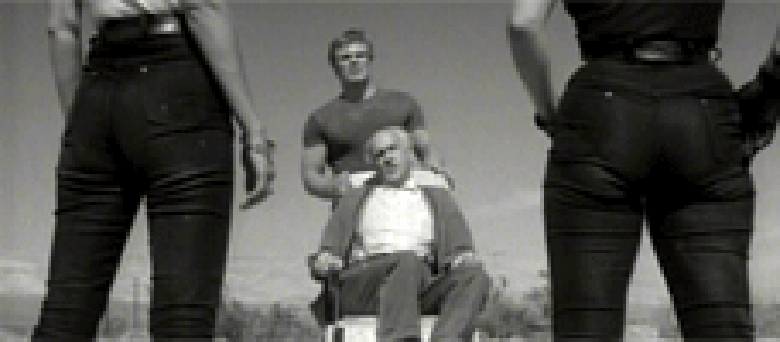
Faster, Pussycat! Kill! Kill!
Russ Meyer
USA, 1965
Credits
Review by Adam Balz
Posted on 29 August 2008
Source RM Films International VHS
Categories Bosomania!: The Sex, the Violence, and the Vocabulary of Russ Meyer
Take away all the jokes, the elaborate camera angles, the violence, the action and the sex, and what remains is the quintessential Russ Meyer image: a towering woman with enormous breasts, who dominates all the men around her, demands sexual satisfaction and casts off men in the same way that, in mainstream sexual fantasies, men cast aside women.
—Roger Ebert
The “beautiful animals” of Russ Meyer’s Faster, Pussycat! Kill! Kill! - Billie, Rosie, and Varla - are three buxom go-go dancers who spend much of the film in and around their cars—extensions of their own personalities. Varla’s black Porsche 356 is fast and dominant, an automobile that endures not only a two-against-one game of chicken in the desert but also scene after scene of reckless driving; early in the film, when a young man challenges her car’s authority - and, simultaneously, her own - with an MG-B, she not only drives him off the makeshift desert racetrack but kills him, beating him before snapping his spine. Billie and Rosie, on the other hand, drive cars that are far from dark and terrifying. While Varla’s automobile is large and closed, Billie’s MG-A and Rosie’s TR-3 Triumph are sleek, shapely, and even suggestive. Distinguished by a blue stripe (the MG-A) and cutaway doors (the Triumph) Varla pits her own car against these two together and wins, not only highlighting her supremacy but also her preference for violence mixed with sexuality - or, if you prefer, violence hidden behind a sexual façde - which she has used, we later discover, to gain control over one of her accomplices.
But Faster, Pussycat! Kill! Kill! is not a case of Meyer sexualizing automobiles, as J.G. Ballard and David Cronenberg would each do years later, despite shots and angles that sensualize fenders, lights, and doors. Instead, Meyer treats cars as focal points of the women’s various powers, and all three are often the most vulnerable when far away from their automobiles: both Billie and Rosie are knifed while away from their automobiles—violent actions that, given the symbolic weapon involved, seems to suggest a paternalistic mindset behind both crimes - and Varla can only match the Vegetable’s - the film’s prevailing object of male sexual potency—mindless muscle-power while behind the wheel of her Porsche, and even then she barely succeeds.
The three women kidnap the dead MG-B driver’s girlfriend, Linda, and come upon the Old Man and his two sons - the older and wiser Kirk, the younger and muscle-bound Vegetable - whom, they’ve learned, are sitting on a handsome fortune. Here we see a mixture of both Billie and Rosie’s use of sexuality and Varla’s abrasiveness and aggression when it comes to finding the Old Man’s money: after realizing she can’t punch or kick the fortune out from the Old Man’s grasp, Varla tries to seduce Kirk into telling her the family secret, a plan which seems to work at first, while Billie tries to seduce the Vegetable to no avail and Linda is left alone with the Old Man, who they’ve identified - correctly - as a pervert.
The Old Man, as it happens, has his own mobile extension: a wheelchair. Paralyzed in a train accident when he was young, the Old Man is bound to his two-wheel, hand-powered vehicle throughout most of the film, leaving it only when forced to: being carried to Kirk’s truck by the Vegetable, pushed off it by Linda after he tries to molest her, dragging himself through the desert in futile pursuit. And even though this extension is without a motor - outdated, symbolizing infirmness - it holds his wealth like a throne. Even as equality, which the Old Man loathes, looms on the social horizon - the end of the post-war era of June Cleaver housewives and shift towards feminism and empowerment - it is still a male-dominated society that holds the money and power. There’s little question that Varla should be able to defeat the Old Man alone, just as she did with the young man in the MG-B, but she cannot: the Old Man not only wields a loaded shotgun, which, in one clever camera angle, is depicted as rising from his waist like a substitute phallus, but has also reared himself a brawny bodyguard in the Vegetable.
Despite the important automobiles featured throughout Faster, Pussycat! Kill! Kill! - not just the three women’s cars but also the young man’s MG-B and Kirk’s white truck - the most important and symbolic means of transportation in the story is seen only in passing—in a train that cuts through the empty desert. We’re told as the Old Man is introduced that he leapt in front of a moving locomotive to save a young woman and inadvertently disabled himself. But there’s a awareness in listening to the Old Man talk - about gender and progress - that it wasn’t this incident which led him to despise women, to view them as nothing more than objects to satisfy his disgusting appetite, nor the death of his wife in giving birth to the Vegetable, but that his abominable attitude is inborn, having existing throughout his life.
Trains have often represented progress in film. And so the Old Man, in trying to rescue the young girl, did so not to save her from death but rather from progress, from equality, no matter its consequences. It’s the beacon from a passing train that sends the Vegetable into a fury, stumbling against large rocks and clutching his skull—he has learned through his father’s story to fear trains. And in the final minutes of Meyer’s film, as Varla chases Linda and Kirk through the desert in Kirk’s white truck, they momentarily step onto train-tracks cutting through the desert, but only momentarily. The women of Faster, Pussycat! Kill! Kill! are champions of independence and power, and they gain these vital statuses in society through acts of sexuality and violence, even though these aspects engender the demise of all three women. Billie, Rosie, and especially Varla act like stereotypical men in a man’s world, as Roger Ebert would point out in his review of Meyer’s film years later, offering one double-entendre after another over dinner, swilling alcohol, and casting less-than-subtle seductive glances at the Old Man’s sons. They are only evening out the playing field—they are trains barreling through an arid desert towards an already established destination.
When, after the dinner scene, Kirk calls Varla a “beautiful animal,” he is summarizing exactly how Meyer views his female protagonists. They are beautiful, yes, maybe even works of human art, but also prone to the animalistic tendencies of their male counterparts. And regardless of the film’s early reputation - as illicit pornography, despite its utter lack of any nudity or sex that isn’t merely suggested or preempted - Faster, Pussycat! Kill! Kill! has aged into a work of pure wonder—a beautiful animal in itself that, beneath its sexy and violent exterior, has a motive both eye-raising and wonderful.
More Bosomania!: The Sex, the Violence, and the Vocabulary of Russ Meyer
-
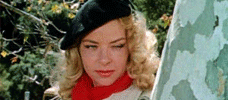
The Immoral Mr. Teas / Eve and the Handyman
1959 / 1961 -
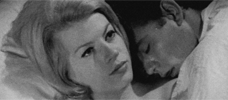
Lorna
1964 -
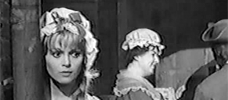
Fanny Hill
1964 -

Mudhoney
1965 -

Faster, Pussycat! Kill! Kill!
1965 -
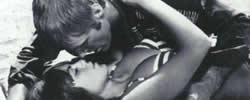
Motor Psycho
1965 -
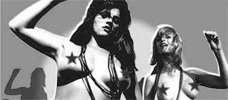
Mondo Topless
1966 -

Common-Law Cabin
1967 -
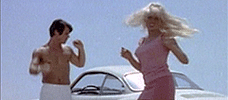
Good Morning and… Goodbye!
1967 -
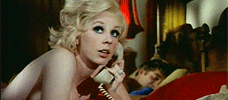
Finders Keepers, Lovers Weepers!
1968 -

Vixen!
1968 -
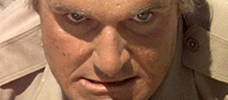
Cherry, Harry & Raquel!
1970 -
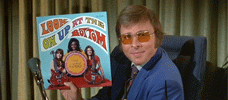
Beyond the Valley of the Dolls
1970 -
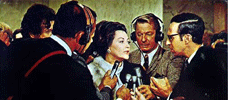
The Seven Minutes
1971 -

Black Snake
1973 -

Supervixens!
1975 -

Up!
1976 -

Beneath the Valley of the Ultravixens
1979
We don’t do comments anymore, but you may contact us here or find us on Twitter or Facebook.


